Understanding Stashology
Gaining an understanding of stashology, or the study of storing drugs, will save you a lot of grief.
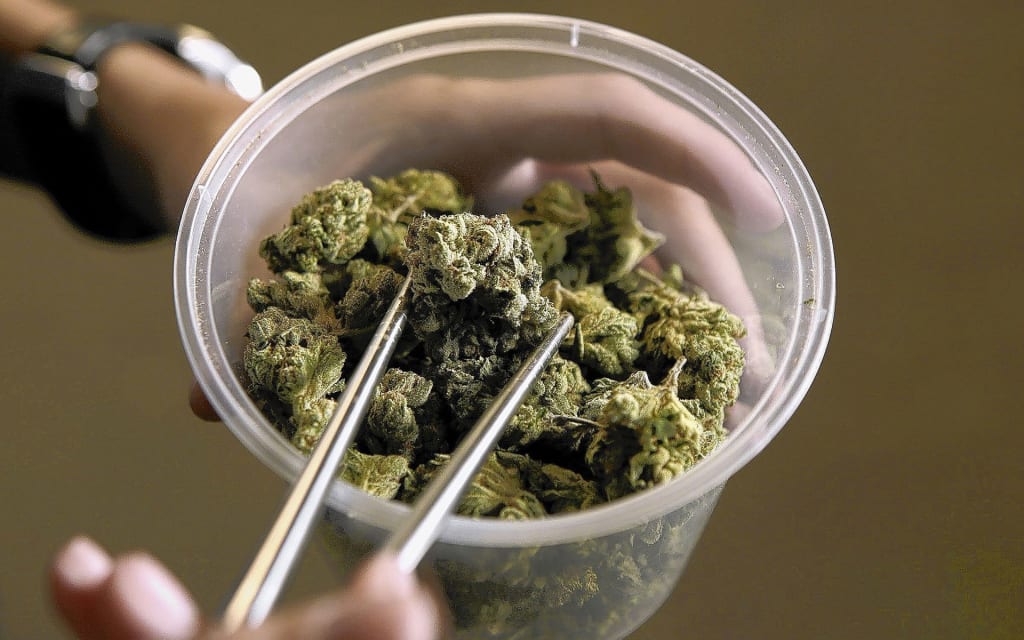
John and Ken had a big problem. What had been a load of almost 7,000 sizable peyote buttons (averaging 6.5 grams a piece) when they’d scored it out in Arizona, was 100 pounds of slime by the time they got it back to New York City. The flavor was unmentionable. The stench was enough to waste goats at 200 yards—nauseating was far too nice a term. The two desperate dealers realized that while almost anyone can put up with the ritualistic vomiting that often accompanies a heavy duty trip on fresh peyote, only the hell for leather masochist would chew down on rotten buttons.
Improper packaging had nearly cost the two their entire investment. When weighing the buttons, they transferred them into plastic garbage bags. That in itself was OK. But then they smuggled the shipment cross country in these hot, humid, bacteria ridden containers. Even a Home Ec student could have told them that fresh vegetables absolutely must be stored in well ventilated sacks or bags.
Fortunately, they were new members of an informal but powerful trade called “CUDA,” the Columbia University Dealers Association. One chemist bought the entire shipment at cost and extracted the mescaline from the buttons. Then the two were given some sound advice: in future, both to reduce bulk and to prevent spoilage over a long haul, it’s wise to dehydrate peyote buttons as soon as they’re scored.
That is just one instance in which an understanding of stashology, or the study of storing drugs, would have saved a lot of grief. Another is in the event of drought. Those with a working knowledge of stashology are the haves in an ocean of have-nots. With that in mind, consider the basics.
Rudiments of Stashology
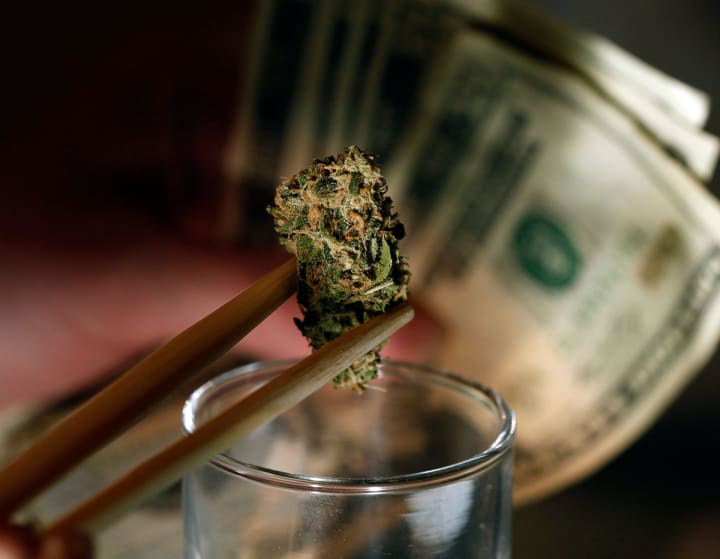
That many factors may combine to destroy or alter a prize stash is undeniable. Heat and moisture support the growth of fungi and bacterial contaminants that can turn scared mushrooms, buttons and buds into unholy mush within a few days, as well as promote oxidation, which does a number on THC-bearing substances (pot, oil, hash). And wherever it strikes, sunlight serves as a general catalyst in breaking down numerous desirable compounds.
To ponder the exact mechanism by which these stash-spoilers work is to become unnecessarily entangled in a web of biochemical mumbo-jumbo. Think only 'cold, dry, airtight and dark.' These four conditions safeguard all illicit drugs:
Cold. Low temperatures slow down molecular activity, thereby retarding deterioration. The colder, the better: any drug stored in liquid nitrogen (-320 degrees Fahrenheit) will remain virtually 100 percent pure for over 30,000,000,000,000 years–about 6000 times the lifespan of Earth! However, the freezer of a run-of-the-mill Kelvinator should do the trick for many moons.
Dry. Mummies tell no tales, but grains of wheat from their tombs have been successfully sprouted in Japan after thousands of years of dormancy.
Airtight. In settling the controversy of "spontaneous generation," Louis Pasteur sterilized a flask of wine and vacuum-sealed it. To this day, over 110 years later, it has shown no signs of decay.
Dark. What happens if you accidentally expose a roll of film? Light also wipes out THC, though not nearly as quickly.
Variables
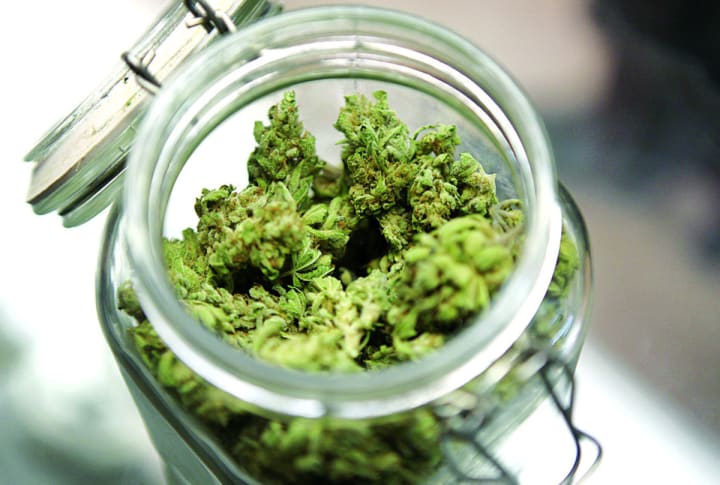
Different containers made of different materials have different purposes. Glass is the best all-purpose, long-term storage material because it is chemically inactive; unfortunately, it is also brittle and therefore a drag to lug around. For toting or short-term storage, try waxed paper, plastic or aluminum foil. Classiness is the only distinct advantage that ivory, silver or mother-of-pearl cases have over other containers–not chemical stability or ease of handling.
Stashing specifics vary even more. Theoretically, all illicit drugs can be stored for several years–without noticeable loss of potency–by slipping them into dark glass vials, tying the vials up in baggies (to keep out unwanted moisture), then freezing the works. Several defects to this approach present themselves:
Grass, mushrooms and peyote buttons are so bulky as to require too many vials.
A freezer lined with powders and pills is, to say the least, suspicious. In order to establish an ideal stash, we must therefore study popular drugs one at a time, according to their usage as well as to their physical and chemical properties.
Hash Oil
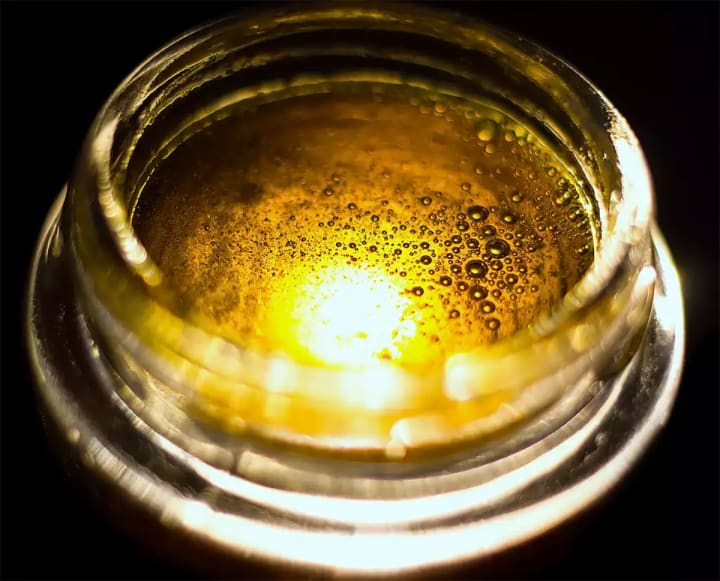
While little information is available on the stability of the active components of hash oil (primarily THC), what there is shows that hash oil should be handled with care. Apparently, through oxidation, THC breaks down into a less potent version of THC, actually only about one tenth as potent. Then from there, it decomposes into cannabinol, which is just plain no good.
All is not lost. To the gourmet's delight, hash oil may be stabilized–and stashed–in a highly palatable solution. As an alternative, it can be preserved in its gloriously gooey form-with a minimum of preparation.
Make a five percent solution of hash oil in ethanol (20ml ethanol/lg oil). At room temperature, this solution will keep for 75 days without deterioration; in the freezer, it will last more than a year without significant change. A bonus is that a sufficiently large solution of "red oil" sitting in a liquor bottle would pass for Johnny Walker Red any day... unless a friend decides to try one of your mixed drinks.
If solutions turn you off, store the oil as is. The dark glass storage vial should have a small diameter; this will minimize the surface area of the oil that's exposed to oxidation. As a further precaution, pour in just enough vitamin E (a natural antioxidant) to cover the goo before freezing it.
Marijuana
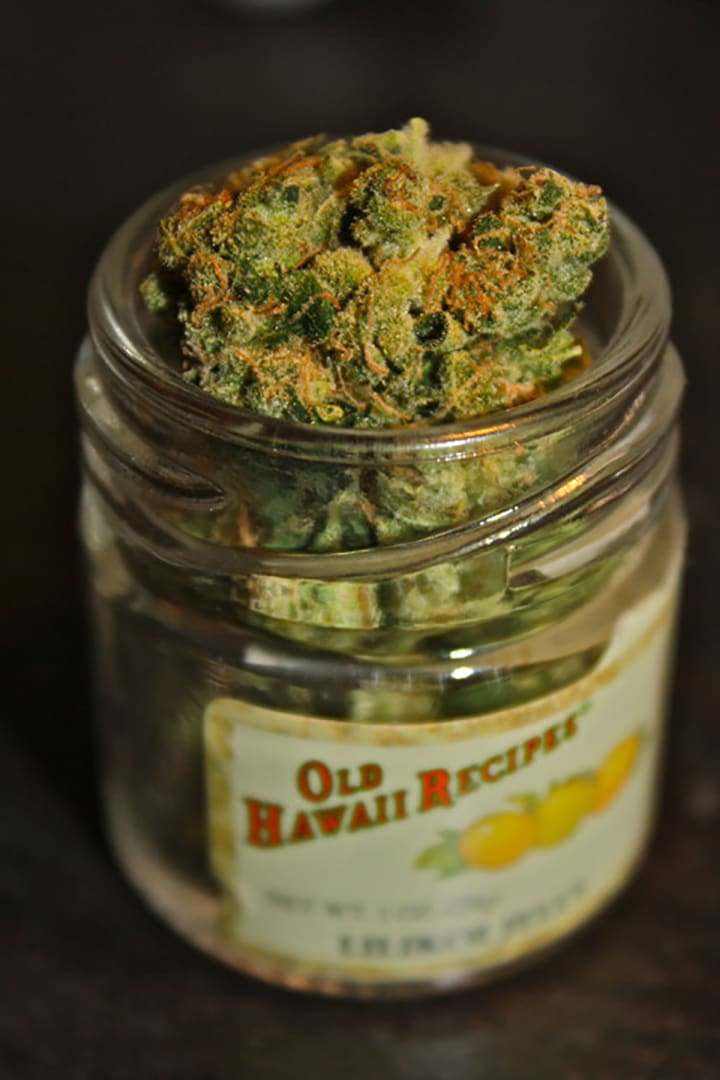
Many share a misconception regarding the aging of marijuana: they staunchly believe that it must be fresh from the farm, retaining some of its original moisture, to be any good. Not so. While last month's shipment might have lost most of its flavor and aroma, it is probably full-strength–unless it has been eaten away by mold. Research has shown that dry marijuana leaves retain all of their THC for months and will get you off nicely after three years. So, in anticipation of lean times, you may set aside a bit of the 'best' by drying it thoroughly.
Equipment is your first concern. A toaster oven is not such a hot idea because it's often too hot: while high temperatures (up to 600 degrees Fahrenheit) may convert the relatively small amount of THC acids that are present in marijuana into THC, high temperatures may also destroy large amounts of THC. Instead, preheat a hotplate or an oven as low as possible-not more than 200 degrees Fahrenheit.
Processing shouldn't take more than a half hour. Once the twigs and seeds are removed from a marijuana sample, it may be spread out thinly and evenly on either a cookie sheet or a tray made from aluminum foil, then popped into the oven. (Leave the oven door open, so that you can keep an eye on the progress). Now and again, remove the tray from the oven, stir the weed to redistribute it, and tap it with your finger. After about 15 minutes the weed will get sticky, indicating that it is dry–that is to say, the water has been driven off and the resin is surfacing. (Expect a weight loss of between five percent and 12 percent for the leaf matter that originally felt dry to the touch).
Then, just tie the weed up in a plastic baggie and toss it into any cool, dry place, such as a drawer or a closet.
As uncomplicated as drying may be, it is also the best method for preserving peyote buttons. But the technique is somewhat different from that used for marijuana.
Psilocybin
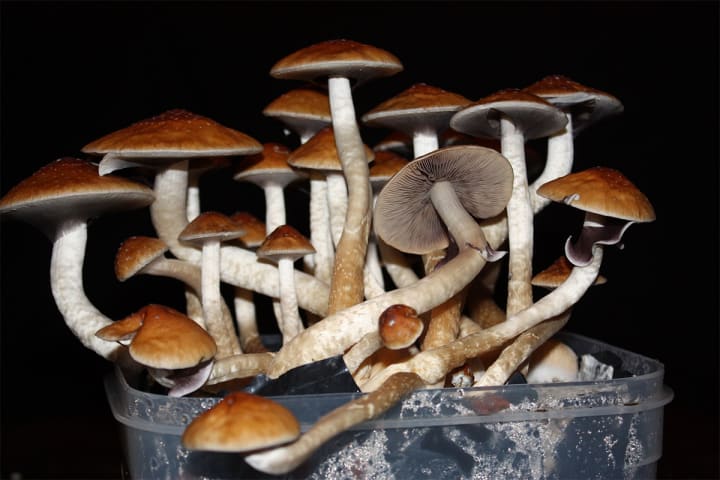
Some people prefer to 'can' their psilocybin mushrooms in Mason jars. Aside from the jars themselves, this procedure requires water, a skillet, and a pressure cooker with a canning rack. Granted it's a hassle, but the otherwise delicate delicacies can last for many years when properly canned.
Begin by simmering the mushrooms in water for about five minutes.
So far, so good; now for the jars. Plop the mushrooms into each jar until the jar is filled to within one-and-a-half inches of its rim. Distribute the mushroom broth evenly among the jars, and add just enough water to cover the mushrooms. After screwing the lids onto the jars, unscrew each lid one half turn.
Next comes pressure-cooking. Put the canning rack into one inch of water in the bottom of the pressure cooker. With a high flame, bring the water to a boil. Set the jars in gently. When the cooker is sealed, it should be heated to about 250 degrees Fahrenheit–15 lbs pressure–for 45 minutes.
The job is complete only each jar is vacuum-sealed. This means waiting until the pressure cooker has cooled off, releasing all of its steam. Remove the jars and twist their tops on snugly. Any jars that lose their seal (those whose tops bow up) must be recooked immediately. Since canned goods are not dry, they must be kept absolutely airtight to prevent any decomposition.
These techniques may take a while to master. And shortsighted individuals may chide you for your pains. But never forget that in times of need, a friend with weed is a friend indeed!
Where to Stash
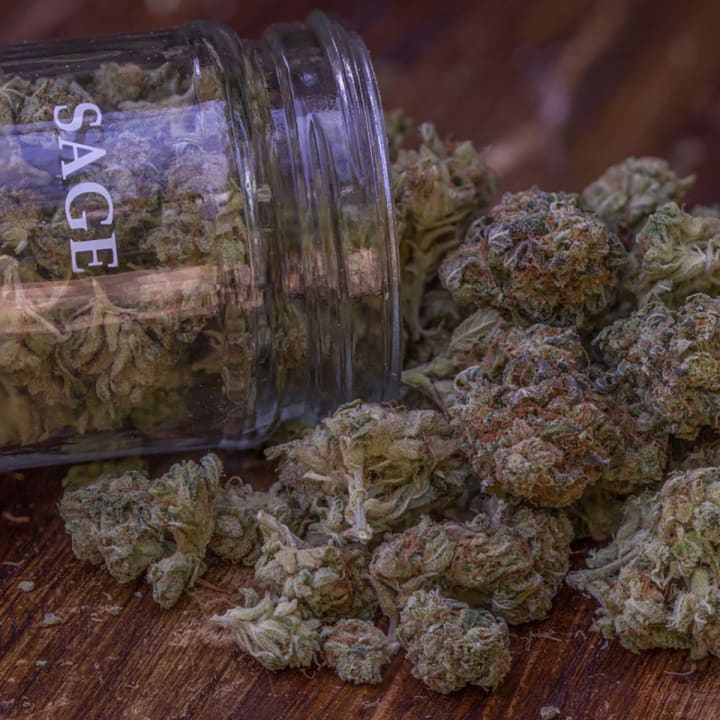
That knock on the door hasn't stopped resounding throughout the land, nor shall it in the foreseeable future. As long as it persists, of course, every user must keep his act low-key. He must also take all appropriate measures to lessen the amount of evidence that may be found in his possession.
Top priority must be given to knowing the whereabouts of one's entire stash. Most places, it makes little difference whether you're caught with 30 grams or 30 tons of weed–it's still 'possession with intent to sell,' and it's punishable by the same amount of time. What good is it to hide or dispose of a couple of pounds–only to be busted with half a pound that was mis laid?
Remember also that police are trained to conduct meticulous searches, and that if they have a search warrant just about anything goes. You can bet they'll check out the damnedest places. So, those in quest of the 'perfect' hiding place are advised that there is none. It's far better to have a prearranged disposal system than it is to rely on sneaky stashes.
Nevertheless, here are some classics of where:
Hollow heels- This is the grand daddy of them all. Some addicts used to carry morphine in the hollowed out heels of their shoes. Back then, however, folks didn't wear platform shoes, which can be rigged to conceal up to 40,000 hits of crystal LSD.
Bogus bucks- The last few years have seen a rise in the number of hollowed-out Silver dollars. "Heads" is fitted to "Tails" so that they will flip apart when squeezed in a certain way, to reveal a space large enough for a half-gram of the drug of your choice.
Snapshots- Crystalline substances can be smuggled, a little at a time, in the hollowed-out backings for Polaroid pictures. While this may seem penny-ante and very outdated, some tourists have captured the essence of their trips to Colombia in a few hundred photographs.
Woodwork- Another time-honored mode of concealment is the secret compartment. Sizeable spaces that defy close examination can be built oft/closet combos. Any skilled carpenter can work miracles.
Jars- Now people can purchase specifically constructed glass jars that have false bottoms.
Pottery- The art of deception has held its own in smuggling. About 15 years ago, some people realized that hash didn't have to be hidden inside of anything–just transformed. So they molded, hard-pressed, then carved hashish into 'pottery.' After it was coated with a few layers of perfumed lacquer, it was painted with standard Indian designs.
Medicine cabinets- Drugs can easily be disguised as drugs.
False outlets- This is secret-compartment trick gone commercial. Dummy electric outlets may be slid into walls to serve as stashes. Better yet, real ones can be adapted for the purpose.
Telephones- Unscrew the mouthpiece, lift out the transmitter, slide in a tubular baggie-ful of anything stuff with cotton to deaden ratting, and reassemble. (Note: Are you thinking what I'm thinking: "What the heck is the mouthpiece of a telephone?").
About the Creator
Hydro Wilson
Of Alpha Kappa Nu fame. Grew up in Boulder, Colorado. Addicted to Halo.






Comments
There are no comments for this story
Be the first to respond and start the conversation.